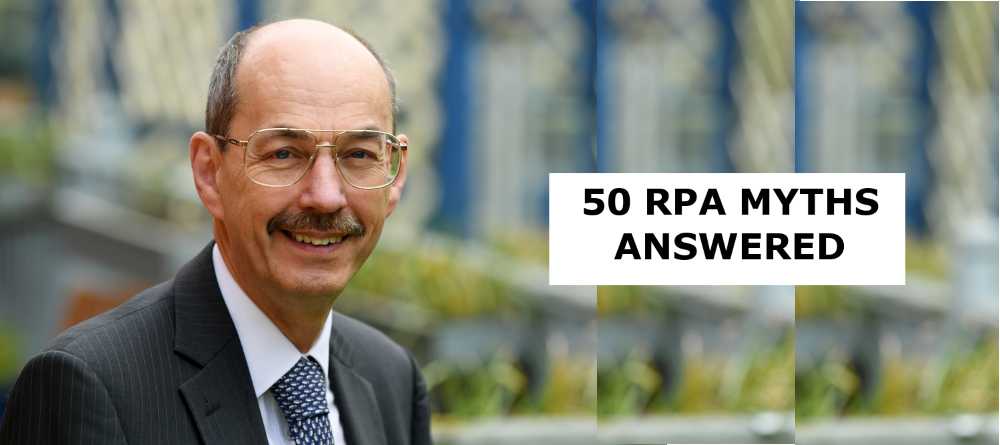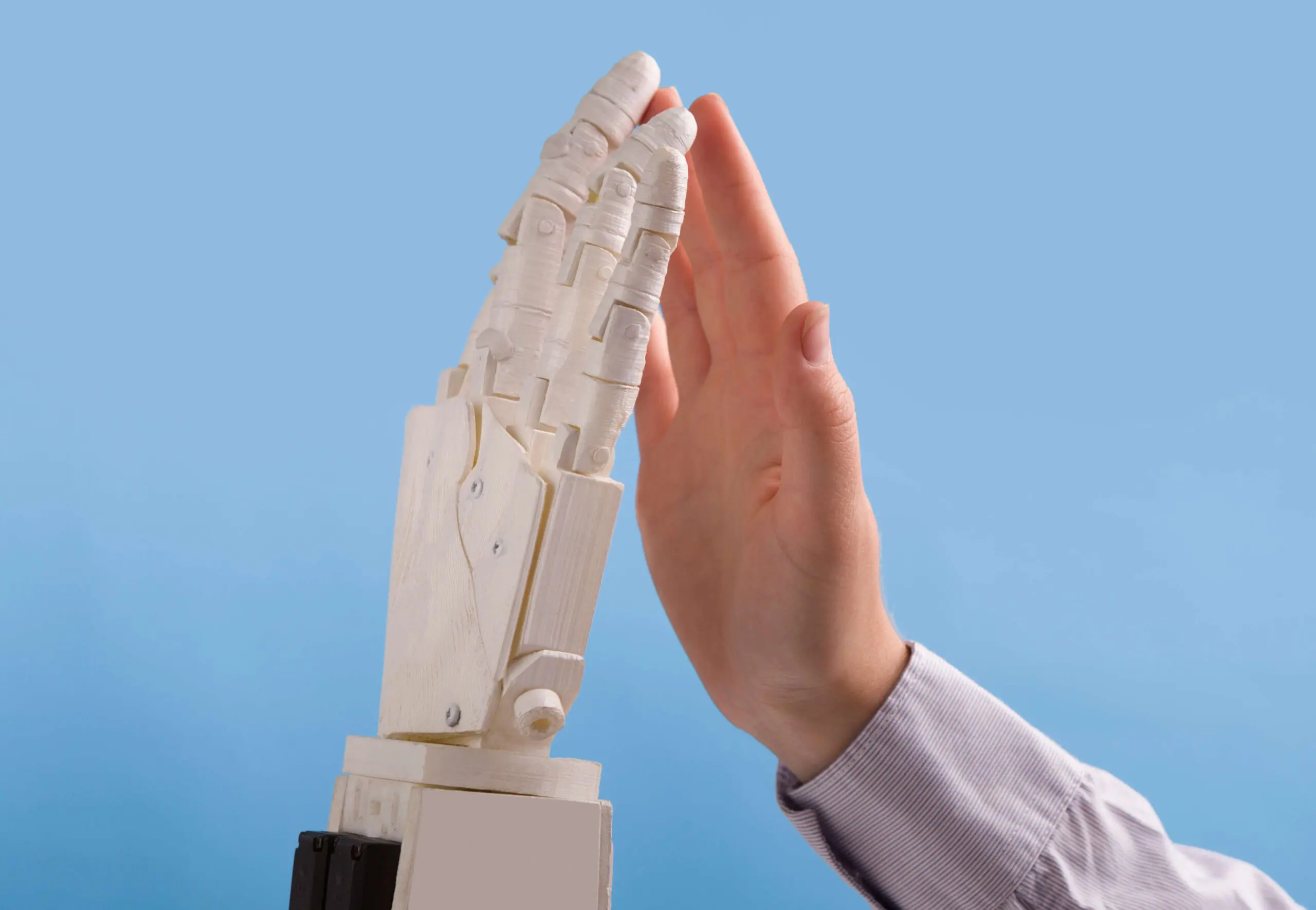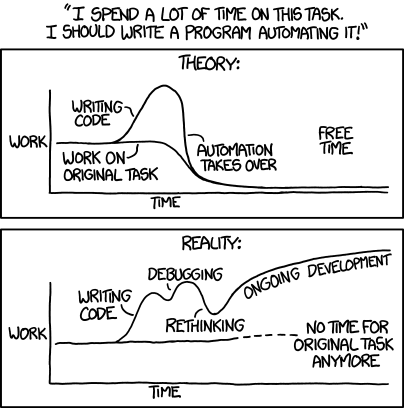Increase Productivity
Increase productivity is an objective for many managers and businesses.
The challenge is how to make the increase in productivity, what can be changed to deliver the improvement.
There is plenty of theory and advice available about motivating teams of people. Motivated people deliver productive outcomes for a business.
INCREASE PRODUCTIVITY THROUGH AUTOMATION
At Ether Solutions we focus on practical changes that can deliver clear productivity benefits. By Automating repetitive tasks in business processes, benefits are achieved that increase productivity
This style of Automation is called Robotic Process Automation (RPA). It uses software robots (aka “Bots”) to perform the same tasks that an employee would perform.
The robots can simulate the activities that a person would when they do the tasks, namely:
- Reading from a computer screen
- Typing on a keyboard
- Moving and clicking a mouse
The software robot performs the same task that a person would complete.
By automating the “Robotic” routine tasks in a worker’s activity, it frees time for the worker. This enables a worker to concentrate on the exceptions, the unusual and other higher value tasks.
Productivity is improved as the amount of human effort to produce the same output is reduced. Yes, there is a resource cost to the software robots but this normally less than the cost of human workers.
When the robots operate at near capacity the operating costs can be in the region of £2 per hour which is significantly less than a person’s minimum wage!
Automate Report Work
Employees working from home (WFH) has highlighted there are electronic inputs to the tasks and electronic outputs. This suggests that there is the potential to automate the tasks.
During remote working, staff often adjust their working day to suit their personal needs. When such adjustments are possible, it indicates there can be flexibility in the time for the process to be performed. When software robots are used, they have the potential to work 24 hours a day, 7 days a week. This delivers a potential processing capability of 4.2 times that of a worker processing for 40 hours a week. This illustrates how improvements can be achieved and an increase in productivity can be obtained.
Not all tasks can be effectively automated. Software robots working in conjunction with people can deliver the best combination skills. The combination can also deliver the best productivity gain. This is often seen as “Assisted Automation” or “Human in the Loop” processing. A good questions is “How to Select a Process for Automation”?
Please contact us to discuss your potential to increase productivity through the use of automation.
MEASURE PRODUCTIVITY
In order to increase productivity, it is helpful to be able to Measure it.
Productivity is defined as the ratio of Output to Inputs. This can be assessed at any level within a business. Productivity could be measured at the level of an individual team, or a department as well across the whole business.
The actual productivity number produced has no magic power. It is effectively used to measure changes and to make comparisons.
The reason that productivity is such an important measure is precisely because of the ability to make comparisons.
At a business level, it allows comparisons between competitors in the same industry. The better the productivity number the more likely a business will succeed as it is financial more effective.
PRODUCTIVITY CALCULATIONS
There is a lot of academic theory available on how to calculate Productivity. Although the basic equation is Productivity equals Output divided by Input. The need for details in the calculation becomes clear when considering different businesses. For example, a Recruitment Agency that has minimal overheads and minimal capital requirements. A Car Manufacturer which has plant, machinery, land, warehouses, stock, etc. with its extensive overheads.
Three measures of productivity are often considered:
- Capital Productivity
- Material Productivity
- Labour Productivity
These are defined in the Productivity FAQ.
To measure an increase in Productivity a few assumptions can simplify the calculation.
Change is the critical element in the measurement of productivity. By making the assumption that everything stays the same, except for the part which is being altered.
It follows that any increase in Productivity is as a result of the change. All of the detail about capital use, material used, etc. will be unchanged.
Using this assumption based approach for the measurement of productivity. The Robotic Process Automation (RPA) change that Ether Solutions implements for clients can be analysed.
PRODUCTIVITY CALCULATION FOR RPA
In the situation where RPA software robots are used to automate an activity currently undertaken by staff, the calculation is:
Output
- Remains constant (The RPA software robots deliver what the staff deliver)
Input
- Reduced effort from staff, the number of man hours required is lower, thus the cost of the input is reduced by the cost of the effort. There is an assumption that the effort can be effectively utilised on other activities rather the staff are paid but do no work.
The cost of the RPA software robot licences to build and execute the automation.
The cost of the computer hardware to host the software robot processing.
- There is also the cost of building the RPA software robot automation. This is a capital type cost. Once created the automation can be used as much or as little as required.
For productivity to increase from the implementation of automation, when the output is constant, the input must be reduced.
It is clear that the saving in staff effort is the key driver in the calculation. Quite simply, the more a process is executed the more human effort that is required to perform the task. It is why RPA is implemented on high volume activities. Of course, it would technically be possible to automate a task that is only performed by a small number of staff on rare occasions, but in such circumstances, it is less likely to result in an increase in productivity.
This example of a productivity calculation starts at a simple level. There are often other quantitative factors and qualitive factors also involved. The Benefits of RPA provides further information.















